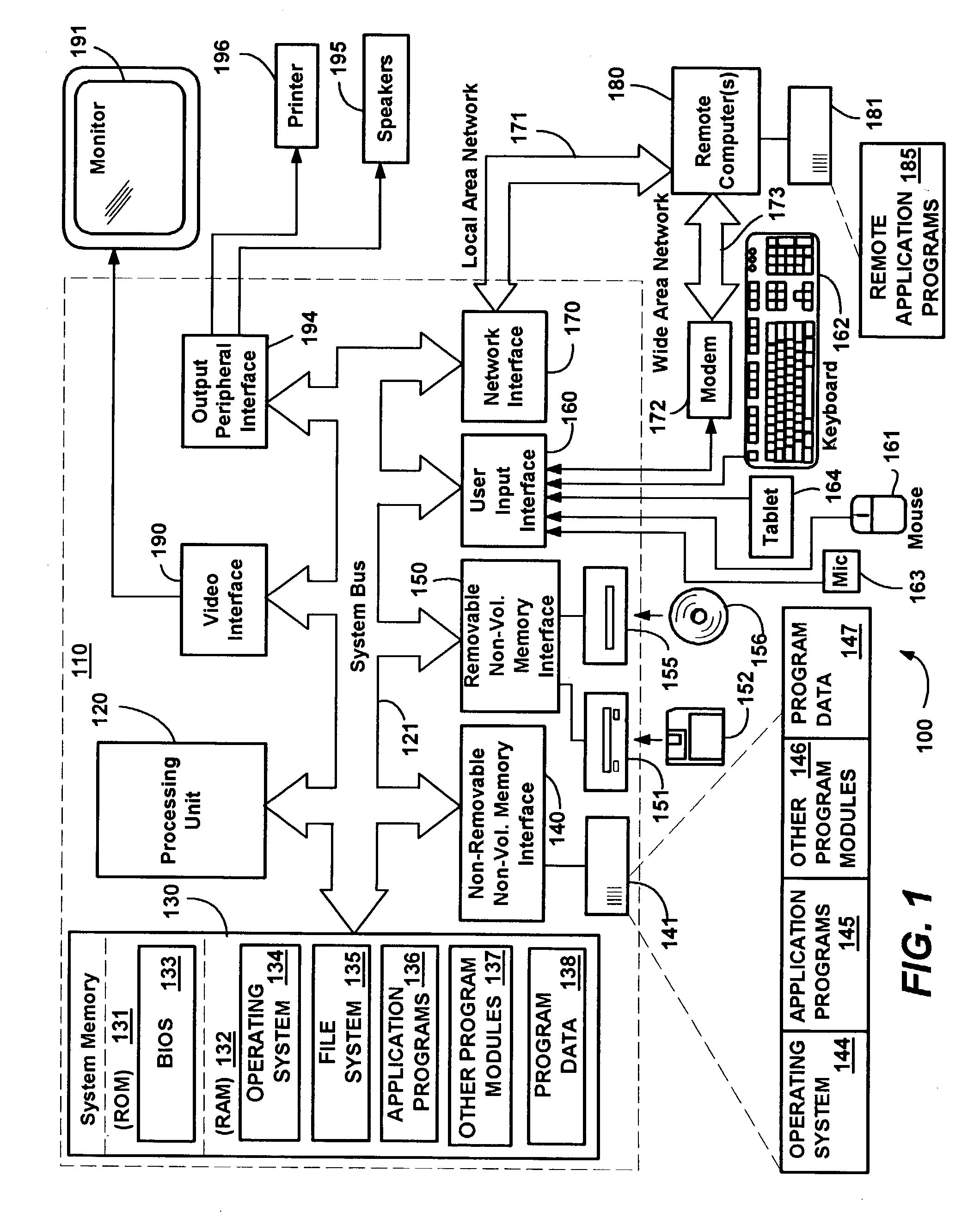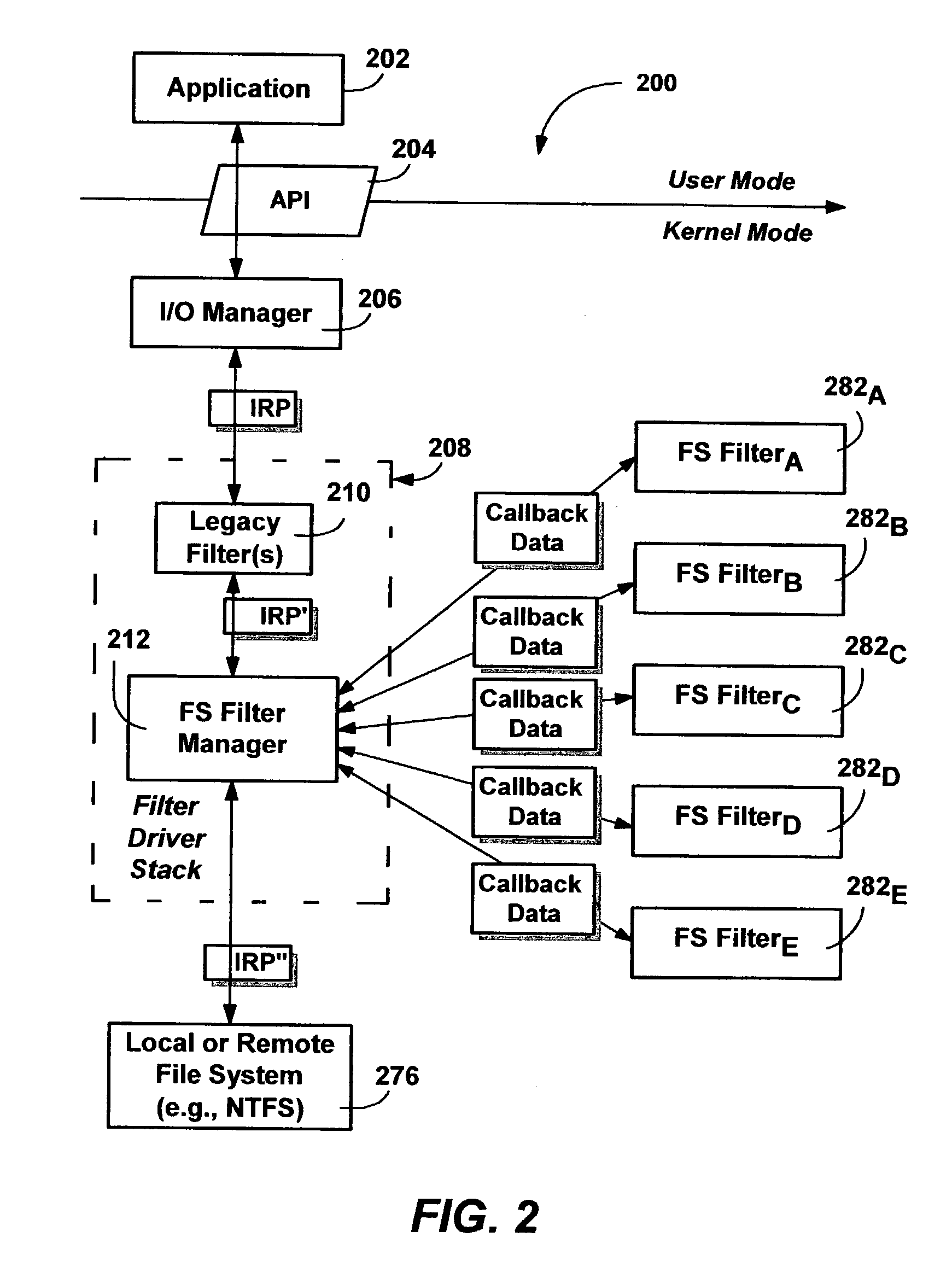Managed file system filter model and architecture
a file system and filter model technology, applied in the field of computer systems, can solve the problems of filtering packets, difficult debugging and maintaining, and non-trivial task of writing a file system filter,
- Summary
- Abstract
- Description
- Claims
- Application Information
AI Technical Summary
Benefits of technology
Problems solved by technology
Method used
Image
Examples
example implementation
[0077]The following describes some of the filter-initiated operations performed via function calls, including registration with the filter manager:
[0078]Filter declares callbacks for interesting I / O:
[0079]
FLT—OPERATION—REGISTRATION Callbacks[] = {{IRP—MJ—CREATE,0, / / FlagsAvCreate, / / pre-callbackAvCreateCompletion}, / / post-callback{IRP—MJ—WRITE,0,AvWrite,AvWriteCompletion}, ...};
[0080]Filter declares a registration structure:
[0081]
const FLT—REGISTRATION FilterRegistration = { ... .AvUnload, / / Unload routineAvInstanceSetup, / / Instance SetupAvInstanceQueryTeardown,AvInstanceTeardownStart,AvInstanceTeardownComplete,......Callbacks, / / Operation callbacks};
[0082]Filter registers with filter manager:
[0083]
status = FltRegisterFilter( DriverObject, &FilterRegistration, &AvFilterHandle );
[0084]Filter get pre-callbacks:
[0085]
FLT—PRE—OPERATION—CALLBACK—STATUSAvWrite( IN OUT PFLT—CALLBACK—DATA Data, IN CONST PFLT—RELATED—OBJECTS FltObjects, OUT PVOID *CompletionContext );
[0086]In thi...
PUM
 Login to View More
Login to View More Abstract
Description
Claims
Application Information
 Login to View More
Login to View More - R&D
- Intellectual Property
- Life Sciences
- Materials
- Tech Scout
- Unparalleled Data Quality
- Higher Quality Content
- 60% Fewer Hallucinations
Browse by: Latest US Patents, China's latest patents, Technical Efficacy Thesaurus, Application Domain, Technology Topic, Popular Technical Reports.
© 2025 PatSnap. All rights reserved.Legal|Privacy policy|Modern Slavery Act Transparency Statement|Sitemap|About US| Contact US: help@patsnap.com



